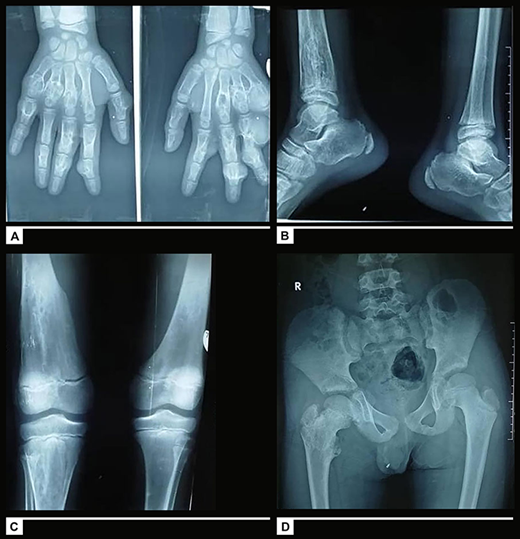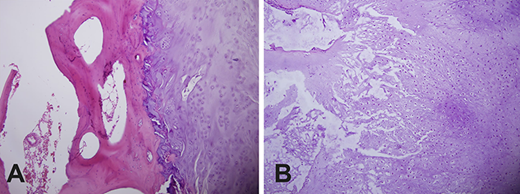A 10-year-old kid presenting with a limp and bony swelling gets diagnosed with a tumour!
A 10-year-old Syrian boy was brought to a pediatric hospital with complaints of multiple painless irregular nodular swelling of proximal phalanges bones which caused him to limp.
From the age of 5 years, the boy had been suffering from multiple recurrent fractures of long bones, followed by abnormal healing.
On examination, the boy appeared conscious, oriented and his intelligence was age-appropriate. His vital signs were normal. Skeletal distortions were noticed in the proximal and distal phalanx of hands with a slight functional limitation along with enlargement of the distal ends of the right forearm and right leg.
Shortness of right lower limb was appreciated which was the cause behind his crippling
His parents and family history was unremarkable, and so was his parents’ examination.
A plain radiograph showed multiple bone lesions in extremities. Radiography of the skull and chest were normal.

(B) & (C) Distal end of the right leg and right femur,
(D) Proximal end of the right femur.
A diagnosis of Ollier disease was made.
A biopsy was performed, which ruled out malignancy.

Ollier disease or enchondromatosis is a non-familial disease characterised by multiple enchondromas. Enchondromas are neoplasms of the hyaline cartilage, a type of benign tumour of the bone.
Pathologic fractures, painless bony masses, and limping due to asymmetric lesions of the bone are a common presentation of this disease. Clinical manifestations and imaging studies aid in the diagnosis, especially the plain radiographs are highly important. Histopathologic evaluation is also necessary to differentiate between benign enchondromas and malignant chondrosarcomas.
Patients with Ollier disease usually receive conservative management. Surgical management may be required to correct the leg-length discrepancy, malignant transformation of the tumour, or for managing pathological fractures. Life-long follow-up is necessary to keep an eye on malignant transformation of the tumour as there is always a small risk of transformation.




